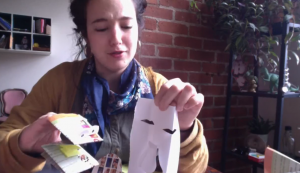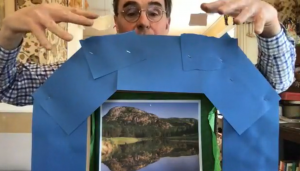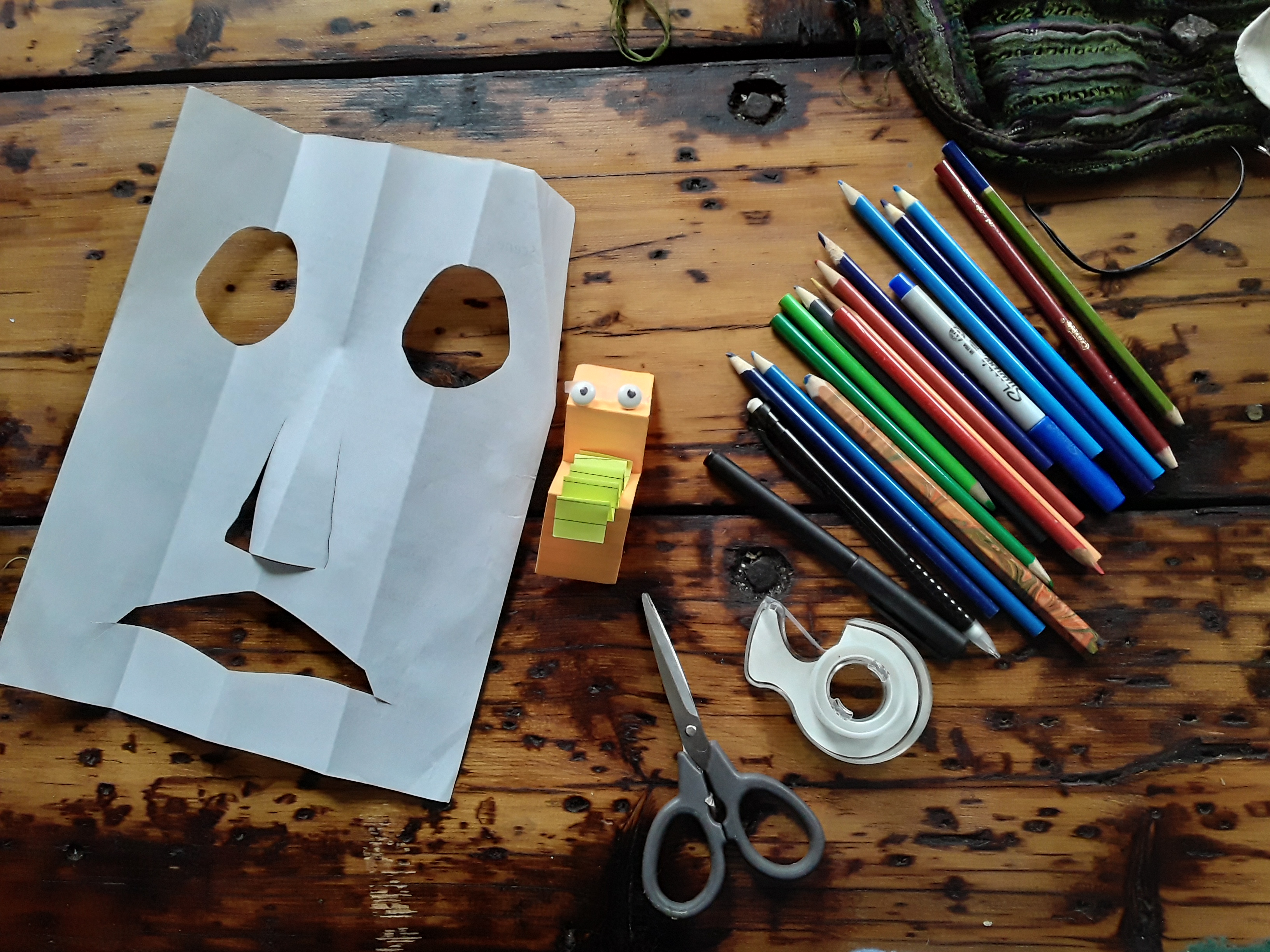Although the coronavirus pandemic has seen closures of cultural spaces like museums and theaters, the Ballard Institute and Museum of Puppetry (BIMP) is undaunted: its popular puppet-making workshops have moved online.
Puppet workshops stream live on the Ballard Institute’s Facebook page on Wednesday and Friday at 2 p.m. ET, and will be archived on its YouTube page.
The first two workshops were led by Felicia Cooper, an MFA student in Puppet Arts and graduate assistant at the Ballard, who conducted a session on “Paper Puppets,” and BIMP Director John Bell, puppeteer and theater historian, who demonstrated how to build a toy theater in his “Fun Toy Theater Workshop.”
Students in UConn’s renowned Puppet Arts program who have led puppet workshops throughout the academic year for school and community groups will be conducting upcoming workshops. MFA student Abby Bosley will demonstrate how to make a dinosaur marionette on April 1 and Tracy Becker (SFA ’21) will conduct a workshop on hand shadows on April 3.

“It’s nice to think that we can reach a wider audience with these workshops online than with our localized workshops in northeastern Connecticut,” Bell says. “It’s making us realize what other things can be done differently from what we normally do. I’m happy with that Facebook Live is a straightforward means of livestreaming such events.”
Cooper, who previously taught art classes in underserved areas of Pittsburgh, says one objective of the online workshops is to make them as accessible as possible to families by using materials they will likely have in their homes.
“We’re trying to keep those material resource needs open and flexible,” she says. “It’s important we’re not asking people to go out and buy things, or invest necessarily in craft supplies; just be creative with what they have at home.”
In her paper puppets workshop, for example, Cooper gathered a group of supplies that included magazines, newspapers, Scotch tape, Post-it notes, scissors, colored pencils, and markers. She tore a page from a magazine, explained how to use a “hamburger fold,” (horizontal) and a “hot dog fold” (vertical) to create a hand puppet. Then she used scissors to cut out circles to be used for eyes she taped to the face.
Folding the note paper in an accordion fashion for a tongue, she demonstrated how to fold a piece of tape to make it double-sided so she could place it inside the mouth of the puppet, where it would pop out when the mouth opened.
She also made a mask out of a sheet of plain, white paper demonstrating how to fold and cut the paper using the paper sculpture technique taught in the Puppet Arts program, which adds a three-dimensional quality to paper puppets.
“Making puppets is a very personal thing,” she says in advising her viewers to use different papers or colors. “You can do it however you want to.”
During the toy theater workshop, Bell demonstrated how to turn a small cardboard box and some colored papers into a miniature traditional English theater stage, including a proscenium arch, and then created a paper puppet of the poet Emily Dickinson that could move using bamboo skewers or pencils. He used glue sticks, a stapler, and mat knife as tools.

“There’s so many different varieties of puppet theater; there’s something for everyone,” Bell says of the workshops, which are held throughout the year at the Ballard Institute. “The toy theater workshop I did is a bit more complicated and used different tools, where Felicia’s was far simpler. With the upcoming hand shadow workshop, all you’ll need is your hands and a light source. For the dinosaur marionette workshop all that’s needed is a plastic cup, toilet paper tubes, and some string.”
A previous exhibition, “Living Objects: African American Puppetry,” is available for viewing at the museum’s website.



